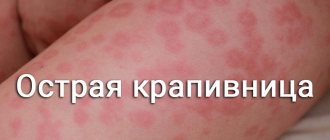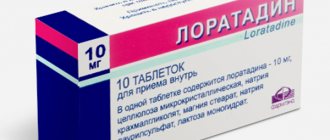Infectious rhinitis
The duration of a viral runny nose is 7-10 days.
The duration of the disease depends on the speed of the immune response to pathogenic pathogens. According to research data, it has been established that a sufficient level of antibodies in the blood is achieved on the 5th day of the disease. This ensures a complete fight against viruses. A few more days are required to restore the affected tissues, which in combination is 7-9 days.
A runny nose in an adult can result from:
- hypothermia;
- inhalation of polluted air;
- contact with sick people;
- influence of the allergic factor;
endocrine diseases associated with changes in hormonal levels. Rhinitis is often observed in pregnant women, starting from the second trimester, and during adolescence;- dysfunction of the nervous system, when the regulation of vascular tone is disrupted;
- abuse of vasoconstrictor drugs. They come in the form of a nasal spray or drops to relieve nasal congestion. You should also be careful when taking medications to enhance male libido, antihypertensive and anti-inflammatory drugs;
- injuries, deviated septum;
- exposure to cold or sunlight;
- adenoids, chronic sinusitis;
- weakened immune defense due to severe infections or systemic diseases.
If the cause of a runny nose is bacterial pathogens, the disease may persist for about a month. Often, bacteria attach against the background of a viral infection and weakened immunity. Signs of bacterial inflammation include:
- febrile hyperthermia, which decreases after starting antibiotic therapy and washing the inflammatory focus with antiseptic solutions;
- thick greenish nasal discharge with an unpleasant odor;
- nasal congestion;
- headache (eyebrow area, bridge of the nose, forehead, back of the head, temples);
- nasal voice;
- insomnia;
- poor appetite;
- weakness.
When the infectious focus is limited only to the nasal mucosa, bacterial rhinitis can clear up within a week. If treatment with antibacterial agents is started in time, recovery can be brought closer. The duration of sinusitis, which has become a complication of a viral runny nose, can reach three weeks.
With chronic sinusitis, a runny nose is constantly observed, the differences lie only in its severity.
It is difficult to cure a fungal infection, so the symptoms of a fungal runny nose can be bothersome for a long time with periodic deterioration and improvement of the general condition.
How long does bacterial rhinitis last?
A runny nose caused by bacteria and accompanied by damage only to the nasopharynx should not last more than 7 days. The minimum period is 4 days, and during this time the main symptoms and manifestations should disappear. This type of rhinitis develops based on complications associated with a viral infection. When this happens and the runny nose continues for more than 6 days, then you should consult a doctor. This is due to the fact that this form of viral rhinitis can complicate a person’s life for a long 10, or even 15 days. This happens because the infection penetrates lower into the respiratory tract.
Interestingly, bacterial rhinitis occurs without significant symptoms, although prolonged residence of the infection in the body provokes a chronic form of runny nose. If you start taking antibiotics on time, then bacterial rhinitis goes away on the second day. Local antibacterial drugs do not shorten the course of the disease and do not cure quickly.
Sinusitis most often manifests itself as sinusitis. The exact duration of the disease is difficult to predict. It all depends on when the person went to the doctor and when treatment for the disease began. If a person is affected by chronic sinusitis, then mucus from the nose will flow constantly, bringing out different amounts of pus. The number of days a runny nose lasts depends on how sinusitis is treated.
Allergic rhinitis is caused by irritants that penetrate the respiratory tract and are active there. As soon as the allergen is eliminated, the runny nose should go away within 2 days. When contact with negative substances is short-lived, rhinitis disappears in 3-4 hours. Unfortunately, a new allergen can cause rhinitis at any time.
Often a runny nose occurs as a result of long-term medication use. For example, it is caused by vasoconstrictor drops. A runny nose usually goes away if the medication is stopped. This type of rhinitis should not be observed for longer than 12-16 days, although there are often residual effects.
Acute rhinitis, which then turns into a chronic stage, is caused by the fact that the patient has a deviated nasal septum, endocrine regulation is disrupted, adenoiditis develops, or a foreign body has entered the nose. This means that treatment cannot be avoided, but the timing of properly selected therapy can vary greatly. Everything is determined by the factors of neglect of the disease and the severity of its course.
Rhinitis can be caused by different reasons simultaneously, which complicates the treatment process. Therefore, the doctor prescribes complex therapy that helps fight the runny nose. When all irritating factors are eliminated during treatment, rhinitis will completely disappear.
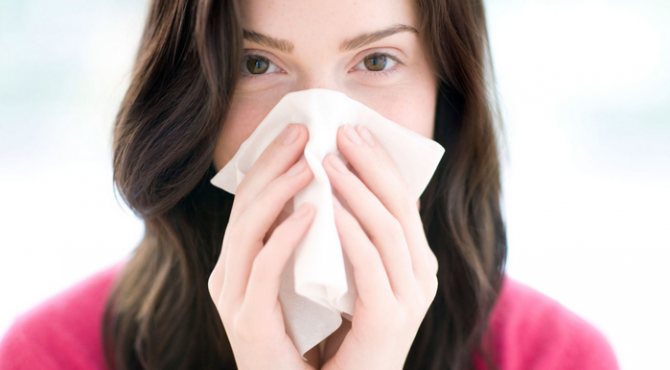
Vasomotor rhinitis
How many days does it take for a runny nose caused by vasomotor rhinitis to go away? Many of us use vasoconstrictor medications when snot appears. They help temporarily restore nasal breathing by constricting blood vessels, reducing swelling and secretion. It is important to know when to stop and not abuse these medications.
The fact is that the use of nasal sprays leads to constant spasm of blood vessels, therefore, the regulation of vascular tone is subsequently disrupted. The consequence of this is the lack of vascular response to the influence of exogenous or endogenous factors.
On the other hand, vasospasm leads to dryness of the mucous membrane, its increased trauma and the development of dependence. In some cases, it is enough to change the drug to achieve the desired effect. However, often vasoconstrictor drugs, even with increasing frequency and dosage of their use, cannot stop rhinorrhea and eliminate nasal congestion.
- increased nasal congestion when going out into the cold or nervous overstrain;
- mucus flowing down the nasopharynx;
- sleep disturbance;
- headache.
What other factor can provoke vasomotor rhinitis?
- irritation of the mucous membrane occurs from dust particles or chemicals. This is especially common among people working in dusty areas or in the paint and varnish industry;
- weather dependence. It manifests itself as nasal congestion when the humidity changes or before strong winds;
- emotional stress;
- hormonal fluctuations associated with endocrine diseases;
- smoking, alcohol, spicy foods.
Vasomotor rhinitis may go away within a day or be constant. It all depends on the presence of contact with the provoking factor.
Treatment with medications

Cause first, treatment later!
Determination of the prerequisites for occurrence. Organization of rhinitis therapy taking into account its etiology. Supporting the baby's health.
If any stages cause you questions, it is better to seek help from the clinic.
https://www.youtube.com/watch?v=4fIBnajW_Fc
To relieve unpleasant symptoms of any type of congestion, vasoconstrictor drops are used, which should not be taken by a child for more than 7 days and in violation of the correct dose (examples of such drops: Otrivin, Vibrocil, Nazivin) for infectious etiology or for the prevention of a runny nose, antimicrobial sprays (Delufen or Euphorbium) are suitable To treat prolonged nasal congestion, homeopathic medicines (Sinupret or Cinnabsin) are often used; for an allergic cause of a runny nose, we can use a natural-based medication - Pinosol; for bacterial infections of the nasopharynx, it is worth trying bactericidal drops (Isofra or Polydex).
Note that in the process of treating a runny nose, an important role is played by constant rinsing of the nasopharynx with the use of saline solutions (Aqua Maris, Humer, Aqualor).
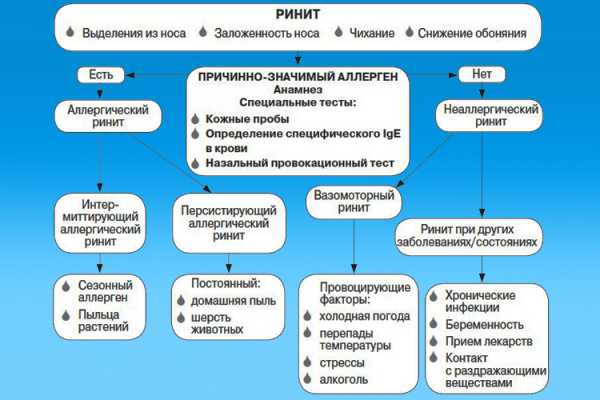
Regardless of the drugs chosen, before using them to treat your baby, it is better to consult a doctor in order to minimize any dangers regarding the occurrence of problems caused by incorrectly organized therapy.
ethnoscience
Aloe juice is an effective remedy for a runny nose.
In case of a mild runny nose in a child, or as an aid to the main course of medication, it is completely acceptable to use methods of traditional therapy.
Drops from Kalanchoe or aloe juice. To prepare, simply squeeze the juice of these plants into a glass, then instill drops into the child’s each nostril 3 times a day for days.
This medication should be stored in the refrigerator for no more than a few days. A decoction of St. John's wort and chamomile. Also used as drops, used in a similar way to the method described above. You can prepare a remedy if you pour one tablespoon of St. John's wort and chamomile herbs into a glass of boiling water, then let the broth brew until it cools completely.
The product must be stored in the refrigerator. Drops of freshly squeezed beet and carrot juice. Application and preparation are exactly the same as in the case of drops from Kalanchoe or aloe juice. The exception is that beet juice and carrot juice are mixed together in equal proportions, and then used.
Ointment for mucous membranes made from honey and peppermint oil. This remedy is prepared by mixing 1 tablespoon of honey and half a tablespoon of peppermint. After preparation, the product is applied to a cotton swab and used as an ointment for the nasopharyngeal mucosa. Onion and garlic. Here it’s enough to cut the fruits and breathe in their smell for a minute with each nostril.
This method of folk therapy is effective only for infectious rhinitis, as it helps to destroy bacteria.
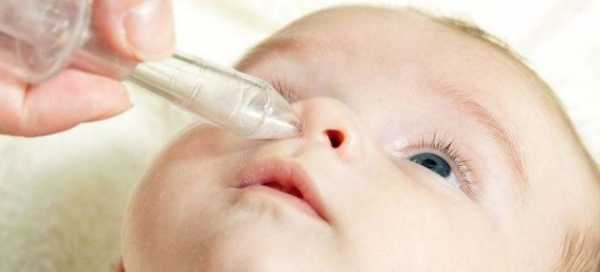
Before using all folk pharmaceuticals, be sure to make sure that your baby is not allergic to their components. Otherwise, such drugs are completely safe for use in treating children.
Allergic runny nose

This will help you contact a specialist in time and prevent unpleasant consequences. If the snot does not go away for several weeks, and an examination by an otolaryngologist has ruled out the infectious nature of the disease, you need to look for allergens. In this case, an analysis of the level of immunoglobulins and an allergy test is required. This type of rhinitis is especially common in people prone to allergies.
The cause of an allergic reaction can be:
- food products (chocolate, citrus fruits, seafood);
- dust;
- chemicals, including household chemicals, personal hygiene products;
- perfume aromas;
- fluff, plant pollen;
- cigarette smoke;
- medicines.
A runny nose is called seasonal hay fever if the symptoms occur during a certain period of the year. When the cause of an allergy affects a person all year round, then the allergy is observed constantly.
The intensity of clinical signs may vary. They consist in the appearance of:
- nasal discharge (watery, clear mucus);
- watery eyes, redness of the conjunctiva;
- nasal congestion;
- frequent sneezing;
- cough.
The danger of constant contact with an allergen is the high risk of developing bronchial asthma. It is manifested by attacks of suffocation, severe shortness of breath and respiratory failure.
If the allergy is triggered by taking medications, the duration of the runny nose depends on the dose of the medication, the duration of the treatment course and the ability of its accumulation.
In addition, the process of drug elimination depends on the condition of the internal organs (liver, kidneys). In case of organ dysfunction, medications take a long time to be eliminated, which is why their concentration in the blood decreases slowly, and the allergic reaction does not subside.
Types of rhinitis
The effectiveness of taking medications directly depends on whether it is correctly selected for a given type of disease. This also determines how many days it takes to cure a runny nose. Its etiology may vary depending on the source and cause of irritation of the nasal mucosa.
viral; bacterial; allergic; medicinal.
Viral rhinitis
In the autumn-winter period, the risk of contracting viral rhinitis especially increases.
It is at this time that colds attack weakened immunity.
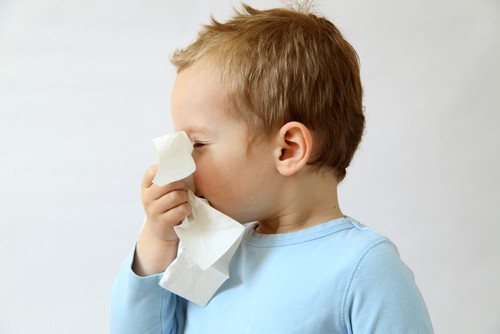
As a result, a person receives a whole bunch of unpleasant symptoms, including irritation of the nasal mucosa.
a sharp increase in temperature; clear discharge from the nasal cavity; general weakness and muscle aches; the rapidity of the course of the disease.
For viral rhinitis, the duration of treatment is usually from a week to ten days. Everything will depend on the strength of the body itself - how soon enough antibodies will accumulate to cope with the attack of viruses. This usually happens on the fifth day. Then intensive restoration of damaged tissues and the resumption of impaired functions of the mucous membrane begins, which takes another couple or three days.
How do you know if a runny nose is going away? It’s very simple - the symptoms will gradually decrease and soon disappear completely.
Bacterial rhinitis
It occurs, as the name suggests, as a result of exposure to bacterial pathogens. Often, bacterial rhinitis is layered on top of viral rhinitis as a result of untimely treatment and a general decrease in immunity.
the temperature rises slowly and rarely exceeds the norm by more than one degree; purulent discharge from the nasal cavity, having a yellowish or greenish tint; absence of accompanying symptoms, local form of the process; prolonged course and treatment of runny nose.
How many days it takes to treat a runny nose caused by bacteria varies from a few days to a little over a month. If the lesion is limited only to the mucous membrane of the nasal cavity, it is possible to cope with the disease in one week.
If you include oral antibiotics, the treatment period can be shortened by another two to three days. If you rely only on the body’s own strength, then it may take more than a month to overcome all the symptoms.
Allergic rhinitis
If the runny nose does not stop even after several weeks, and examinations exclude bacterial and viral etiologies of the disease, you should think about conducting allergy tests - perhaps the runny nose is of an allergic nature.

Allergic rhinitis can be seasonal or permanent (chronic).
It can develop under the influence of allergens - substances that are sometimes the most harmless for most people, but cause a violent reaction in an allergic person.
This may include dust, pollen or pet hair, food and strong odors from perfumes or cosmetics, cigarette smoke and medications.
nasal congestion and swelling; frequent urge to sneeze; infrequent coughing or suffocating cough; watery eyes and redness of the eyes; often accompanied by allergic conjunctivitis.
To reduce the manifestation of allergies, antihistamines are prescribed. It is possible to completely eliminate the symptoms only with the final elimination of the irritating factor.
Excessive use of vasoconstrictor drugs, their use in excess of the norms specified in the instructions for use, may not lead to a cure for the runny nose, but to its intensification and protracted course.
the appearance of nasal discharge when the temperature changes; stagnation of mucus in the throat; sleep disturbance; frequent headaches.
To recover from this type of inflammatory process, you will have to completely stop taking vasoconstrictor drugs. If this is successful, then within a few weeks the respiratory function will be completely restored.
Snot in children
There is also a physiological runny nose in newborns, which is associated with the structural features of the respiratory organs. It can last up to two months and go away on its own.
In addition, nasal discharge of a mucous nature may appear during teething, which does not require treatment. Rhinorrhea ends after 1-2 days in parallel with the subsidence of the pain syndrome.
As for the allergic origin of snot, this is a big exception for infants. In older age, the frequency of allergies depends on the child’s heredity and immune strength.
Features of the development of runny nose in children
The cause of a runny nose in children can be an amoeba, a virus or an allergen.
A runny nose is a pronounced inflammation of the nasal mucosa, which always has some reason for its occurrence.
Physiological, associated with the personal features of the structure of the nasopharynx of a particular person. Allergic, manifested as a natural reaction of irritation of the mucous membrane to allergens. Medication, which is a consequence of incorrectly organized therapy with various types of medications. Infectious, appearing due to the development of ailments in a person that are caused by fungi, microbes, viruses or other microorganisms.
copious secretion of mucus in the nasopharynx, difficulty breathing due to the fact that the nasal passages are clogged with mucous masses, heaviness in the facial area of the nose, dryness and burning in the nose, increased sneezing
The reflex stage, which continues for hours after the first irritation of the mucous membrane has occurred and the development of inflammation has begun.
At this phase of the development of congestion, paleness of the mucous membrane, dryness and burning in the nose, as well as increased sneezing are often observed. The catarrhal stage, which occurs immediately after the end of the reflex phase of the development of a runny nose. At this step, the development of inflammation begins and its formation into a rather severe pathology. As a rule, the catarrhal stage is accompanied by severe redness of the mucous membrane, its swelling and the previously noted inflammatory effect of the tissues.
The inflammatory stage, which is the final stage in the development of a runny nose and consists of already formed inflammation of the mucous membrane. At this phase, all the symptoms of a runny nose are observed and how quickly they go away depends only on the strength of the immune system of the sick child and the therapeutic measures taken.
Let us repeat, there is no particular threat of nasal congestion in children.
But, in any case, it is important to treat this pathology with due responsibility and immediately cure it if it occurs. Otherwise, some complications may arise.
The duration of a runny nose depends on almost all factors!
The etiology of congestion, that is, the cause of its occurrence. The less serious it is, the sooner you will get rid of your runny nose. So, for example, a bacterial runny nose takes the longest to go away, but an allergic rhinitis can be completely stopped in a few hours. The strength of the immune system of a sick child.
Naturally, the stronger the protective functions, the sooner nasal congestion will disappear.
The quality of the therapeutic measures taken. Everything here is very simple: if you act well from a medical point of view, then a runny nose can go away several times faster than it would go away only through the body’s protective functions. Moreover, immunity is not a drug in terms of guaranteeing results. Therefore, we strongly advise you not to let a runny nose develop, but to get rid of it in time by using appropriate healing remedies.
for allergies - from a couple of hours to 5 days for infection - from 3 days to 21 days for physiological and medicinal etiologies of nasal congestion, the duration completely depends on the speed of taking certain measures (refusal to take medications, surgery, etc.)
Do not forget that a child can be cured of a runny nose in a very short time only by contacting a pediatrician.
Otherwise, therapy will be based on various risks and the threat of complications.
To prevent complications from appearing, we cure a runny nose correctly and on time!
If the child’s runny nose is not cured in time, it will become protracted, which can be completely considered acquired.
A similar classification is assigned to any rhinitis that lasts for more than a month without interruption. Therapy for a prolonged runny nose is extremely difficult, and its course is no less unsafe.
the occurrence of severe pathologies of the respiratory system, the development of respiratory dysfunction, asphyxia, long-term decline in immunity
snores does not eat enough loses weight coughs constantly wants to sleep, does not play enough and has a fever
Such symptoms indicate a severe pathological condition of the baby’s body, the treatment of which is possible only under the supervision of a specialist.
Taking into account this danger, we strongly advise against ignoring the treatment of nasal congestion in a baby in the early stages of its development. Otherwise, the therapy will be extremely long, which can only happen under the best circumstances...
Prevention
To reduce the risk of snot, it is enough to:
- refuse to communicate with animals if you have a tendency to allergies to wool, use hypoallergenic cosmetics, get rid of indoor flowers, eat only those foods that do not cause an allergic reaction;
- regularly clean the nasal cavities from crusts;
- rinse your nose with saline solutions. They are sold in pharmacies (Humer, Salin) or you can prepare them yourself (dissolve 5 g of salt in 230 ml of warm water). You can also use saline solution. Saline solutions are approved for use from the neonatal period;
- breathe fresh air more often (in the evening in parks, botanical gardens, forest areas);
- drink enough fluid (1.5-2 liters daily);
- maintain a certain temperature and humidity in the house.
Do not forget to consult your doctor and strictly follow his instructions. Only in this case can complications of diseases be avoided.

Nasal congestion and excessive discharge from it, sneezing are very unpleasant symptoms that any person periodically encounters throughout his life. You always want this condition to pass quickly. Therefore, the question of how long a runny nose lasts normally remains relevant.
How long does a runny nose usually last?
Many people are interested in how long a runny nose lasts in an adult. This is a condition familiar to all people, when mucus suddenly begins to flow from the nose, and health worsens. And all this is due to a cold or a common runny nose, which can happen suddenly and at any time of the year. Therefore, patients who go to see a doctor begin to worry about how long the runny nose lasts and what it depends on.
How long does bacterial rhinitis last?
You suffer from a runny nose on your feet
A runny nose is not a condition for which you can take sick leave. But if it is accompanied by a cold and a general deterioration in health, it is highly desirable. What home remedies can help with a runny nose? reduce activity.
The ideal option is to spend a couple of days at home, under a warm blanket, sipping on a hot drink. In this case, all the body’s forces will be aimed at fighting the infection, and along with the cold, you will also get rid of rhinitis.
Features of the condition
The above symptoms occur when acute rhinitis develops. It is usually caused by viruses entering the nose when the body is weakened: during hypothermia, overwork, stress. In such situations, immunity is reduced. As a result, microbes actively multiply inside the nasal passages. They get there from the air or during contact with sick people.
This condition must go through 3 stages:
- reflex: in the first few hours you feel a burning sensation and dryness in the nose, active sneezing begins;
- catarrhal (2-3 days): the mucous membrane swells greatly, the blood vessels dilate, because of this the nose is stuffy, it is difficult to breathe, and clear mucus is also released (a large amount);
- improvement: swelling decreases, it becomes easier to breathe, you want to sneeze less, the discharge becomes thicker and acquires a yellow-green color.
To the question of how many days it takes for a runny nose of viral origin to go away, the answer is as follows: from 6 to 10 days. It depends on what kind of immunity a person has, how quickly and efficiently the patient began to be treated. Usually, only by the 5th day of illness the body develops immunity to suppress viruses, and it takes several more days to destroy them and restore the damaged mucosa. With good immunity and timely treatment, a runny nose goes away even within 3 or 5 days.

Treatment with medications
ethnoscience
Vasoconstrictor drops and sprays really help to quickly stop a runny nose. But it’s not for nothing that the instructions for most of them say: “Use no more than 3-5 days.” Continuing to instill them beyond the agreed period, you risk developing the so-called medicinal rhinitis.
Vasoconstrictors, as the name implies, reduce the lumen of the blood vessels of the nose. Due to this, the swelling of the mucous membrane is relieved, which is why we feel congestion. It sounds inspiring, but, alas, there are two unpleasant moments here.
The vessels, firstly, get used to the medicine and stop responding to it. And secondly, they lose the habit of narrowing on their own - they need medicine. But they no longer react to him. It turns out to be a kind of vicious circle: the nose can no longer get rid of congestion on its own, and vasoconstrictors no longer help.
Still trying to breathe freely, you increase the dose of the medication. And for a while it really works, but then everything repeats itself. The dose has to be increased over and over again, and in the end you can no longer live without the treasured bottle, and a runny nose turns into a constant companion.
What to do about it
Go to the ENT specialist as quickly as possible and solve the problem in close cooperation. Most likely, you will have to stop the drug and endure nasal congestion until the blood vessels are restored.
Onions are an excellent remedy for relieving the symptoms of nasal congestion. Experts surveyed by the renowned medical resource WebMD even recommend using it in rooms where kids with colds sleep. Like, cut fresh juicy onions into rings, put them on a plate and place it at the head of the crib. The sulfur contained in onions will help normalize the outflow of mucus, and as a result, the baby will be able to breathe freely.
Everything is good, except for one thing: we are talking about inhaling the smell of onions, but in no case about onion drops in the nose! The mucous membrane of the nasopharynx is very sensitive. Acrid onion juice can damage or dry it out, depriving the body of its natural protection against infections. This means that the disease will drag on.
The same applies to other folk recipes such as lemon drops, a solution of laundry soap, and so on. Using them, you take a confident step towards chronic rhinitis.
What to do about it
Stop onion drops and start restoring damaged mucous membranes. It is best to do this under the guidance of an ENT specialist.
Most often, restoring the mucous membrane only means moisturizing it: make sure the air is humid and rinse your nose with saline solutions several times a day. You can buy them at the pharmacy or prepare them yourself: add ¹⁄₄ teaspoon of salt and soda to a glass of warm water.
Cases of long-term illness
The condition of nasal congestion may last for a longer time. If after 10 days there is no improvement, the fact is that the person is sick with some other type of rhinitis.
- Bacterial. Most often it becomes a complication of a viral infection and requires treatment with antibiotics. Inflammation from the nasal cavity passes into the paranasal sinuses, sinusitis and sinusitis often develop (their signs are headache, a feeling of heaviness in the projections of the sinuses when palpating and tilting the head, a slight increase in temperature, and it persists). If you take antibiotics in a timely manner, it can go away in 1-2 days, and the symptoms of the disease will decrease, but without treatment, it can become chronic.
- Allergic. It lasts the entire time that a person comes into contact with the allergen, and after it is eliminated it passes quickly - in 1-2 days or even in a few hours.
- Vasomotor. Occurs as a result of too frequent instillation of vasoconstrictors for other types of runny nose. As a result, addiction takes place; without these drugs, the capillaries cannot narrow, so the nose remains constantly stuffy. Such a runny nose (no matter how long it lasts) is treated with hormones and ENT procedures.
- Chronic. Caused by a deviated nasal septum, adenoids, or foreign bodies entering the nose. It does not go away without special treatment.
It is always important to know how many days a runny nose lasts. Without this, it is impossible to determine its type and begin treatment.
You have polyps or other complications that you do not yet know about
Sometimes swelling of the tissues in the nose becomes habitual. This happens, for example, in those who suffer from seasonal allergies or have had colds on their feet for many years. The swollen areas of the mucous membrane are gradually increasing. This is how growths called polyps appear in the nasopharynx.
While the polyps are small, they do not make themselves felt. But year after year they grow and at some point begin to trap mucus in the nasal passages. This results in symptoms of nasal congestion and runny nose, which does not go away.
Chronic rhinitis can also be caused by other complications. For example, inflammation of the paranasal sinuses or previous injuries that distort the nasal passages.
What to do about it
Any runny nose that lasts longer than 5–7 days should be seen by a doctor. The specialist will suggest a treatment regimen that is right for you. The regimen may include physiotherapy, medications and even surgery (if it turns out that the cause of nasal congestion is large polyps or, say, a deviated nasal septum).
Age differences
Usually a runny nose in an adult goes away a day or 2 faster than in a child. The immune system of mature people is better developed. An adult is more disciplined in his treatment and is better able to clear his nose. Because of these factors, colds in children more often become bacterial. In this regard, if the baby gets sick, he needs to be treated especially carefully and monitor the course of the disease. It is also necessary to follow all the pediatrician’s prescriptions so as not to harm the fragile body.
A runny nose in a child, primarily an infant, often occurs with the following features:

In any case, if a child begins to sneeze and has a stuffy nose, you should immediately contact a pediatrician.
What is the best way to cure?
Treatment in many cases determines how many days a runny nose goes away. In order for it to end faster, it is necessary to start taking antiviral drugs and take other measures from the very first day. First of all, doctors recommend sprays with sea water, mucolytic drugs, phyto- and homeopathic drugs are acceptable.
It is undesirable to frequently use vasoconstrictor drops and sprays, as this can lead to vasomotor rhinitis. Inhalations with essential oils (contraindicated for allergic rhinitis) and instillation of a salt solution will also help.
Also, with a runny nose, especially if it does not go away for a long time, many folk remedies help well:
- finely chop the onion, add water and a teaspoon of honey, mix everything, let it brew and instill 6 times a day (5 drops into each nasal passage);
- hard boil 2 eggs, wrap in a cloth, apply to each wing of the nose and hold until cool (usually recommended for sinusitis);
- mix mumiyo with peach oil, drop 4 drops 3 times a day;
- make a cake out of propolis and apply it to your forehead;
- pour mustard powder into cotton socks, put woolen or terry socks on top, lie down to rest for several hours (it is more rational to do such a compress at night) - this method of treatment is recommended at the first signs of a cold.
Methods for treating a runny nose
Rhinitis can be cured if the cause of its development is eliminated. For this purpose, medications or traditional medicine recipes are used. Experts recommend using folk remedies only as an addition to the main therapy. This allows you to achieve maximum treatment effectiveness.
Medications
Treatment of any form of rhinitis involves several stages. The main ones:
- identifying the cause of the condition;
- selection of therapeutic tactics taking into account the cause of the pathology;
- maintaining the achieved result and compliance with preventive recommendations.
The selection of medications should be carried out by the attending physician. He may prescribe the following medications:
- drops that have a vasoconstrictor effect to eliminate negative symptoms: they should not be taken for more than 1 week or in higher dosages;
- if a runny nose is caused by an infection, it is advisable to use special antibacterial sprays: the most popular of them are Euphorbium compositum and Delufen;
- homeopathic remedies (Cinnabsin, Sinupret, etc.) to eliminate chronic rhinitis;
- allergic rhinitis is treated with drugs that contain only hypoallergenic substances;
- antibacterial agents (Polydex, Isofra, etc.) - for bacterial rhinitis.

During the treatment of a runny nose, it is advisable to additionally rinse the sinuses with saline solutions. Before using any medications, you should always consult a specialist.
ethnoscience
Folk remedies should be used as a complement to primary therapy. The most effective against a runny nose are the following recipes:
- Aloe and Kalanchoe juice. The components are mixed in equal proportions. The prepared composition should be instilled three times a day for 5-7 days, 2-3 drops per nostril. The finished medicine is stored for 3-5 days in the refrigerator.
- A decoction of chamomile and St. John's wort. This remedy is also used in the form of drops. To prepare it you need 1 tbsp. l. chopped chamomile and the same amount of St. John's wort pour 250 ml of boiling water. The mixture is infused for 10-20 minutes. It needs to be stored in the refrigerator.
- Carrot and beet juices. The ingredients are mixed in equal proportions. You need to instill the product 2-3 drops 2-3 times a day into each nostril.
- Peppermint and honey ointment. To prepare this recipe you need 1 tbsp. l. natural bee product mixed with 1/2 tbsp. l. plants. The composition is used to treat the mucous membrane of the sinuses using a cotton swab. This must be done as carefully as possible to avoid injury.
- Garlic and onion. The fruits must be finely chopped and breathed over the prepared gruel for 5-7 minutes. This technique is effective only in the treatment of infectious forms of rhinitis, because allows you to quickly eliminate pathogenic bacteria.
Prevention
It is also very important to strengthen the immune system, then a runny nose will develop less frequently and go away faster. To do this, you should lead a healthy lifestyle: go to bed on time, eat right, don’t smoke or drink alcohol, move more and go out into the fresh air, try to avoid stress, and if it does arise, get distracted and relax.
It is necessary to dress appropriately for the weather, wash your hands after going outside and before eating, and have less contact with sick people. Contrast foot baths are also useful for preventing colds. You should alternately hold your feet in a basin with hot and cold water (2 minutes and 6-10 seconds, respectively). This improves the body's thermoregulation.
If you know how long it takes for a runny nose to go away (6-10 days), it will be easier to immediately begin treating possible complications. And if you take care of your health and strengthen your immune system, you have a much higher chance of avoiding both the disease and its consequences.
Features of the disease

The causative agents of infectious cystitis are Proteus, Escherichia coli, fungus, staphylococcus and other harmful microorganisms. This type of disease occurs as a result of:
- Inflammation of the genitourinary system;
- Hypothermia;
- Decreased immunity;
- Past infection;
- Promiscuous sexual intercourse;
- Inactive lifestyle;
- Lack of vitamins;
- Poor hygiene;
- Chronic constipation.
The course of cystitis in this case can be acute or chronic. In the first case, the patient has clearly defined symptoms of the disease.
Non-infectious cystitis develops with constant irritation of the bladder. This occurs due to damage to its walls by chemical, radiation, and toxic substances. This type of disease can occur against the background of other pathologies: prostate adenoma, urolithiasis, prostatitis, malignant tumors.
Be sure to read the information about infectious and non-infectious cystitis.
It is impossible to get rid of the disease without proper diagnosis. Usually the patient is prescribed a general analysis of urine and blood, a biochemical study of blood from a vein, and bacterial culture of urine. In some cases, cystoscopy, ultrasound of the kidneys and genitals, cystography, and a vaginal smear are performed.
Allergic rhinitis
If the runny nose lasts more than 2 weeks or the nasal congestion continues, the cause is allergic rhinitis. The disease affects adults and children over 7 years of age more. Symptoms of the disease depend on the nature of the allergen and the duration of contact. Characteristic signs of allergic rhinitis:
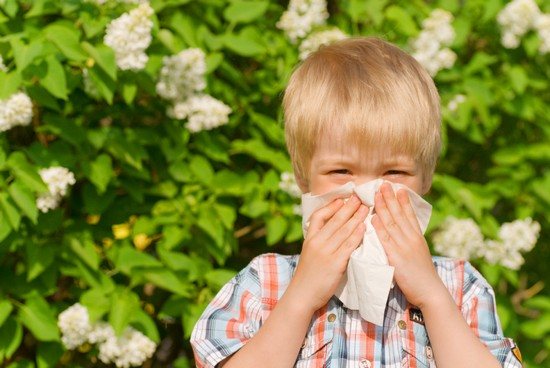
- clear, copious discharge or constant nasal congestion, which worsens at night;
- paroxysmal sneezing;
- lack of temperature;
- itching in the nose;
- mild swelling of the face;
How many days does it take for a runny nose to go away? With occasional contact, rhinitis stops immediately after the allergen is eliminated. For seasonal allergies, a runny nose goes away within a week of treatment with antihistamines and hormonal drugs. If the cause is pet hair, rhinitis will last as long as the source of the disease remains in the house.
Let's consider what treatment is used for allergic rhinitis:
- Antihistamines of the second and third generation are prescribed - Zondak, Telfast, Erius, Cetrin. The course of treatment is at least 2 weeks, 1 tablet per day.
- For mild cases in adults and children, local remedies are used - Cromohexal, Cromoglin.
- They use Nazaval spray, which creates a film in the nose that prevents contact with the allergen.
- For severe rhinitis, hormonal sprays Aldecin, Nasobek, Flixonase are used.
According to reviews from people suffering from seasonal runny nose, rinsing the nose with sea water Aquamaris, Dolphin, Humer helps with exacerbation. These products wash away allergens when trees bloom.
How many days does a viral runny nose last in an infant?
Rhinitis, or, more simply, a runny nose, is one of the most common diseases that affects people of any age. Children especially often suffer from a runny nose. At the same time, a child who already knows how to talk can himself complain that he is sick, but with children under one year old who cannot blow their nose or explain what exactly is bothering them, things are much more complicated. How can you tell if your baby has a runny nose? This article is devoted to this issue.
A runny nose is associated with many diseases that affect the nasal cavity. Most often it appears during viral infections (ARVI), allergic rhinitis, bacterial damage to the nasopharyngeal mucosa.
First of all, it should be noted that a runny nose in an infant is not always a symptom of a disease. The formation of excess mucus can be a sign of the so-called physiological runny nose. This “runny nose” often occurs in children under three months of age.
Physiological runny nose is the formation of excess sputum by the mucous membrane of the nasal cavity. The cause of this condition is the immaturity of the tissues that produce sputum.
In newborns, the mucous membrane of the nasopharynx is too dry, since its secretory cells practically do not function (under the conditions of the mother’s body this was not necessary - the nasopharynx was already constantly moistened with amniotic fluid). Over the course of 2-3 months, the baby's respiratory system adapts to air conditions.
Physiological runny nose is not accompanied by fever, loss of appetite and activity of the child.
Infants can get viral rhinitis, which is often called a cold. SARS viruses are spread by airborne droplets; They enter the body of an infant through contact with a sick person or a carrier of infection. The body of a child in the first year of life has not encountered most viruses, and therefore his immune system does not yet have mechanisms that provide resistance. As a result, infants become infected very easily and suffer the disease much more severely than adults.
A viral runny nose in an infant has the following symptoms:
- the appearance of snot - in the first 1-2 days of the disease it is liquid and transparent, in subsequent days it becomes more viscous and turns white;
- increased body temperature (in infants with ARVI, the temperature can exceed 38C);
- redness of the throat, nasal mucosa, eyes;
- sneezing;
- refusal to feed (the child takes the breast, but then abandons it because he cannot breathe through his nose);
- sleep disturbance (also as a result of nasal congestion);
- the baby becomes capricious and inactive.
Treatment of viral rhinitis in infants is usually limited to local therapy. It is necessary to frequently instill the nose with isotonic solutions (drops based on sea water, saline) - this helps to liquefy and drain mucus from the nasal passages. The use of vasoconstrictor drops is not recommended.
If the runny nose is severe and the baby’s nose is literally clogged, you should clear the nasal passages of mucus using a special aspirator or a small rubber bulb. Be careful not to insert the aspirator/bulb tip deep into your nose.
Rhinitis caused by bacteria is very rare in children, contrary to popular belief. At the same time, bacterial rhinitis is a very dangerous condition; it can provoke various complications (for example, otitis media, sinusitis), and also, with inept treatment, become chronic. In addition, this disease itself is difficult for children to tolerate.
Infants suffering from bacterial rhinitis experience the following symptoms:
- discharge of thick yellow-green snot;
- nasal congestion;
- high body temperature (above 38C);
- absence of parallel symptoms - sneezing, redness of the throat, cough, etc.;
- poor health (refusal to feed, poor sleep, frequent crying).
The diagnosis of “bacterial rhinitis” can only be made by a doctor, and only after a bacteriological examination of a smear from the nasal cavity of a sick child.
If a pathogenic bacterial microflora is detected, the child may be prescribed antibiotics. However, in some cases, treatment is limited to the use of local antiseptic drugs, as well as drops that thin the mucus. The need for antibiotics is determined by the patient’s condition, the type of infectious agent, the intensity of inflammation and other factors.
Allergic rhinitis is a disease associated with the body's hypersensitivity to allergens entering the respiratory tract with air. Dust, animal hair, household chemicals, plant pollen, etc. can act as an allergen.
Allergic rhinitis is often diagnosed in infancy. Manifestations of allergic rhinitis in infants are as follows:
- frequent sneezing after inhaling air potentially containing an allergen;
- lacrimation, redness of the eyes;
- discharge of a large amount of clear liquid mucus from the nose;
- swelling of the nasal mucosa, and as a result - congestion.
These symptoms can occur simultaneously or separately.
The general condition of allergic rhinitis is not disturbed - the temperature is not elevated, appetite and sleep are normal. In the absence of allergens in the environment, a child with allergic rhinitis seems absolutely healthy.
If you suspect allergic rhinitis in an infant, you should consult a pediatrician or allergist. Treatment of allergic rhinitis is a complex and lengthy process, and the selection of drugs is always individual. Today, there are anti-allergy drugs developed specifically for infants (including both general and topical drugs - nasal drops). In addition to periodically taking medications, allergy sufferers are forced to constantly avoid contact with the allergen.
conclusions
Signs of a runny nose in an infant suffering from various types of rhinitis are largely similar: hypersecretion of nasal mucus, impaired nasal breathing, and refusal to feed. At the same time, infectious rhinitis (viral and bacterial), unlike allergic rhinitis, is always accompanied by a disturbance in the well-being of the sick child; this is primarily due to intoxication.
Intoxication is the poisoning of the body as a result of the entry into the blood of substances formed during the life of pathogenic microorganisms. It can manifest itself in the form of headache, fever, stomach or intestinal upset. Intoxication is observed with bacterial and some viral infections (for example, influenza).
Knowledge of the characteristic symptoms of various types of rhinitis in infants will help parents identify this or that disease in the child; however, parents should not give their baby any medications on their own until the pediatrician confirms (or refutes) the suspected diagnosis.
How to understand that a baby has a runny nose if he cannot say anything, or rather, explain. A pediatrician can help the mother with this; he will also give recommendations on treatment and care for the child during this period. A runny nose in an infant is a common occurrence, and every parent encounters it sooner or later.
Young mothers believe that a newborn’s runny nose can only occur due to a cold, but this is not true. The causes of a runny nose can be different, although colds are, of course, more common. Only a doctor can determine the reason for the runny nose:
- Physiological runny nose. In children in the first weeks of life, excessive moisture in the nasal cavity is often observed. There is no need to be scared, this is a normal and completely natural phenomenon. The child’s body adapts to new conditions, and in connection with this, the nasal mucosa actively produces mucus. Such a runny nose should not worry parents; it will pass quickly. In this case, treatment is not required, the main thing is to ventilate the room where the baby is well and not allow the air to dry out. It is easy to distinguish a physiological runny nose from a pathological one - little mucus is released, the baby is cheerful, calm, eats well (because there is no swelling and nothing interferes with nasal breathing), he sleeps normally.
- Viruses and bacteria. Infectious diseases in an infant are more severe than in an older child, so treatment must be carried out without fail. But if you react in time and seek help from a pediatrician, then unpleasant consequences can be avoided.
- Allergic runny nose. In a baby, an allergy can be caused by many factors: plant pollen, animal hair, the product used to wash his clothes or clean the room, products that the mother eats (if the baby is breastfed), and so on. In order to identify the allergen, you need to observe very carefully, after which the baby’s nose runs and his eyes water.
- Vasomotor runny nose in infancy is a rare phenomenon, the cause is problems with blood vessels, and since the nasal cavity is lined with mucous, in which there are many of them, a runny nose develops as a result of edema.
- If the air in the room is too dry, a runny nose can be a protective reaction. Most often this occurs in winter. At this time of year, the windows are closed, the radiators are hot, and the air becomes dry. In this case, you need to take the child for more walks and cover the radiators with wet towels. If you use a humidifier, you should be aware that without regular cleaning, mold begins to appear in the device, and such a useful device becomes a source of danger.
Symptoms of a runny nose
A runny nose is not a harmless phenomenon, especially in infancy. In the nasal cavity there is an area that protects the respiratory organs from infection; when the functions of this area are disrupted, extremely unpleasant consequences can occur.
In newborns, the nasal passages are very tiny, so even a slight swelling can block the flow of mucus from the nose, in which case it can begin to flow down the auditory tube and cause otitis media. It is very important to take action in time. But how to identify a runny nose in such a baby?
- How many days does it take for facial allergies to go away in adults - All about allergies
- Snot due to food allergies in a child
- How to understand allergies or colds
- Why does hives not go away?
Recommendations for a quick recovery

Doctors warn that taking antibiotics alone is not enough for a complete recovery and recommend:
- Maintain bed rest;
- Take warm baths with herbal infusions;
- Follow a diet. You need to give up alcohol, smoked foods, sweets and pickles. Advises eating vegetables, dairy products, drinking more fluids;
- You cannot stop treatment after the first improvement. You need to complete the course of antibiotics;
- You should strengthen your immune system, rest more often and not overwork;
- It is necessary to take care of personal hygiene and avoid casual sexual intercourse;
- The body must not be overcooled.
Herbal decoctions and infusions can only be taken orally after consulting a doctor. Many plants have contraindications. The diet must be followed after finishing the course of antibiotics for 2-3 weeks. If antibacterial drugs are replaced with herbal medicines, the recovery time will increase significantly.
The main rule for preventing and getting rid of cystitis is timely and high-quality therapy. Following all the doctor’s recommendations will help get rid of the disease in a short time, and the patient will not have to endure painful symptoms for a long time.
▲ error: Who's here?
Snot and adenoids
Often, a runny nose with adenoids in children is protracted. In a child, starting from the age of three, the adenoids enlarge, and after thirteen years they themselves decrease. This time period is characterized by frequent rhinitis, caused by enlarged adenoids.
They interfere with the free access of air into the nasal passages, which leads to poor circulation and congestion. The adenoids become a permanent site of infection, which every now and then provokes the appearance of snot.

The appearance of a runny nose more than five times during the year eloquently indicates that the child has problems with the adenoids. They are characterized by the following features:
- difficulty breathing;
- the child constantly breathes through his mouth;
- long-term rhinitis that cannot be cured.
If you have such a problem, you should take your child to see an ENT doctor. If not treated correctly, the disease is fraught with the development of deafness, changes in the bones of the skull, frequent otitis media and sinusitis.
You have chosen the wrong drugs
A runny nose seems to be such a common occurrence that one is tempted to self-medicate.
Sniffling, you come to the pharmacy and ask the pharmacist: “Give me some drops for snot.” And you get a drug that may be popular and effective, but not suitable for you specifically. The fact is that a runny nose can have many causes besides a cold. For example:
- allergies: from popular seasonal to cold;
- excessively dry and dusty air in the room where you spend most of the day;
- hormonal changes in the body: pregnancy, menopause, developing diabetes, and so on;
- even a tiny object that accidentally gets into the nasal passages...
Each of these causes requires its own treatment regimen. And those medications that will help with one will be categorically ineffective or even worsen the symptoms with another. So, vasoconstrictor drops will not relieve you of a runny nose caused by a foreign object in the nose.
What to do about it
In order not to make a mistake and not put something into your nose that is not suitable for your situation and cannot improve it, buy only those medications that your therapist or ENT specialist will prescribe for you.
If you are already using any medication, stop it and discuss possible alternatives with the same doctor.
Drug-induced runny nose
This rhinitis rarely affects children. Nasal congestion in adults can persist if the cold is not treated correctly. Long-term use of a vasoconstrictor spray for ARVI leads to the development of drug-induced rhinitis.
What happens with this disease? The vasoconstrictor stops the runny nose, but provokes swelling of the mucous membrane. The swelling is so severe that it blocks the natural flow of air into the larynx. The result is constant nasal congestion, which forces you to breathe with your mouth open and prevents you from getting enough sleep at night. Children become lethargic and moody
Important! Drug-induced rhinitis occurs after 2 weeks of using the spray
How long a runny nose lasts depends on how quickly you see a doctor. If self-medicated, the disease will last indefinitely.
If doctors have determined that the cause of long-term rhinitis is the abuse of nasal spray, complex therapy is used. How long does a drug-induced runny nose last? The course of treatment continues for one month. They use complex drugs Aldecin, Flixonase, Benarin, Nasonex or Avamis. The dosage is 2 drops 1-2 times a day for a month. Dexamethasone is instilled at the same frequency for 1 week.
Additionally, antiallergic drugs Erius, Loratadine, Zyrtec are prescribed, 1 tablet or tablespoon for 7–10 days. Abuse of the vasoconstrictor Naphthyzin results in a protracted disease that can be avoided with the right dose.
How long does a runny nose last?
In most cases, the average adult patient's colds clear up in about 6-8 days.
During this time, the immune system “adapts” to changes in the body and defeats the disease.
But such dates are not final: they can vary, and the main reason influencing this is the origin of the cold.
So, in the acute form of bacterial rhinitis, it takes about a week to completely eliminate it.
But this period can be shortened by taking decongestants.
Nasal congestion in such cases develops precisely against the background of swelling of the mucous membrane of the nasal passages and nasal septum, and this disrupts the normal breathing process, in addition, the body tries to remove phlegm.
It is worth noting! With chronic rhinitis, which turns into an acute untreated disease, nasal congestion can last from several weeks to an unlimited time.
It can last until the underlying disease is completely eliminated.
In medicine, there are cases where such nasal congestion lasted in patients for several years.
A prolonged runny nose (but not as much as in the chronic form) can be observed in the case of viral infections of the respiratory tract (ARVI).
This duration mainly due to serious damage to the respiratory tract , against the background of which more severe pathologies develop than cold inflammation, for example, sore throat.
In such cases, the snot will last throughout the entire incubation period - from five to ten days.
Keep in mind! Regardless of the etiology of the cold, rhinitis can be long-lasting even if left untreated.
Depending on the complications that have developed, the general condition of the patient and the state of his immunity, such a runny nose can last from one to several months, but in each case these periods are individual.







